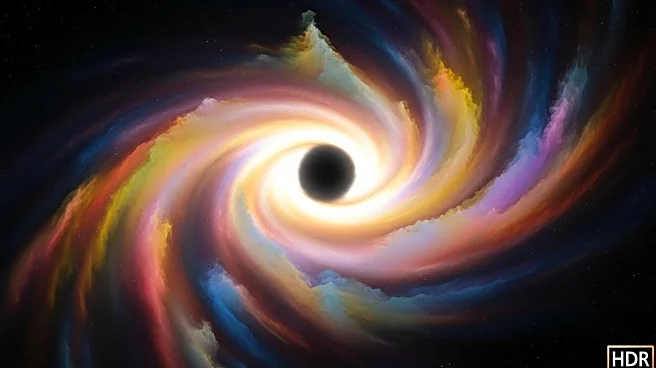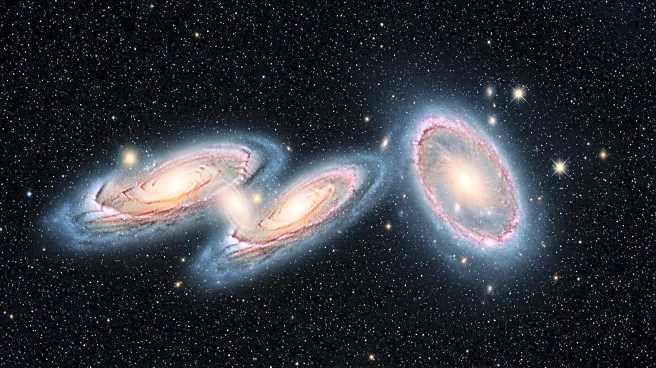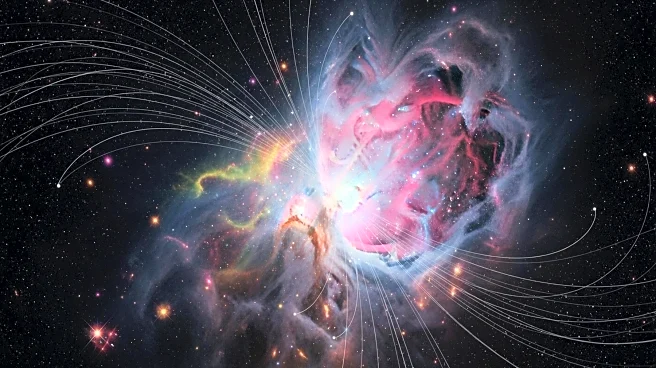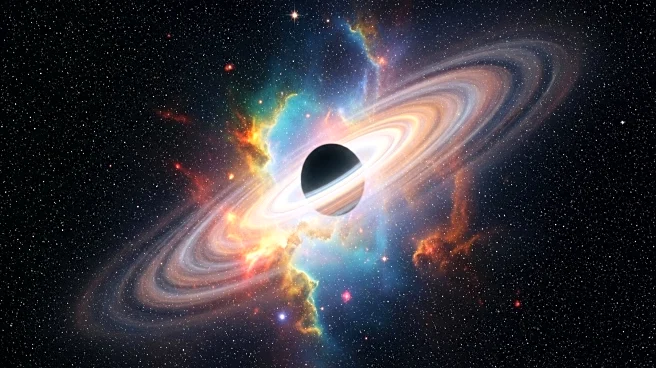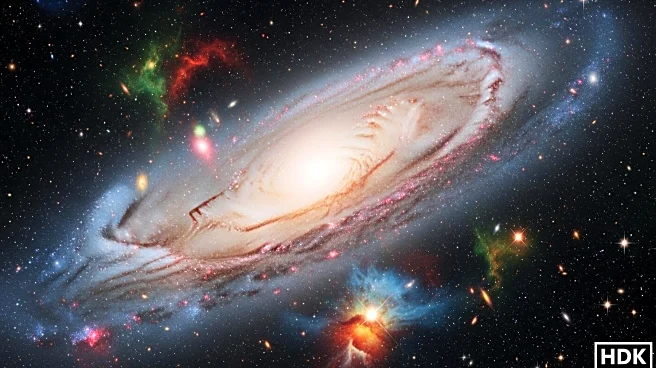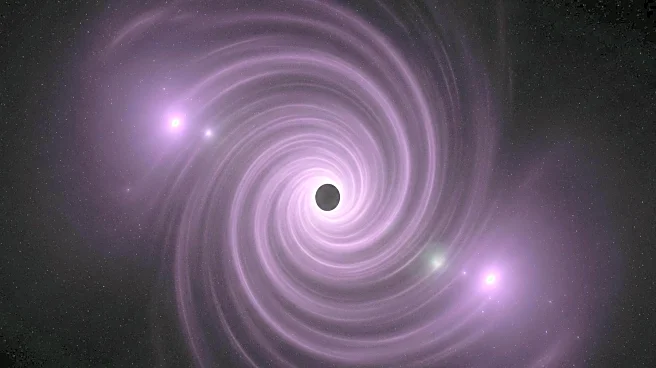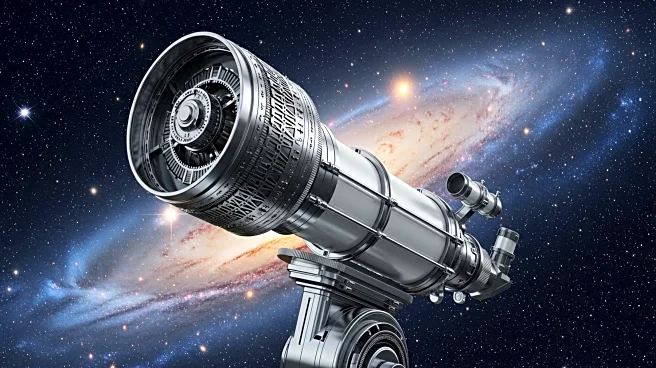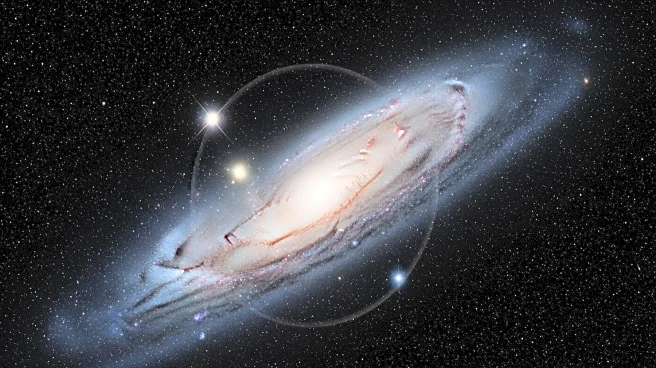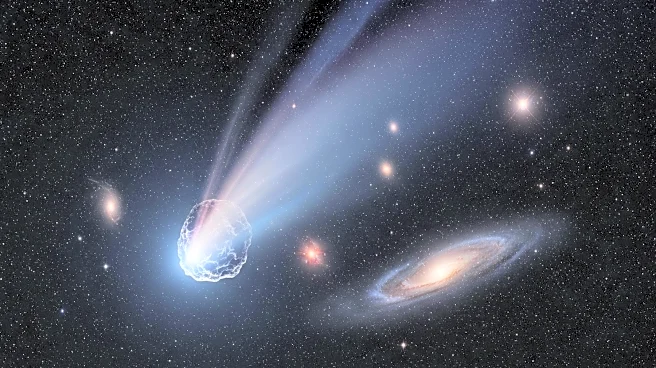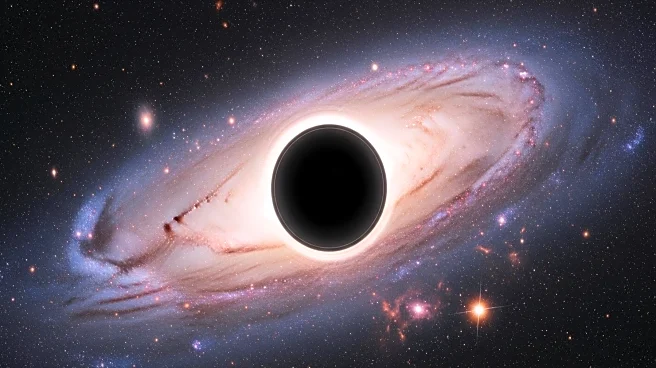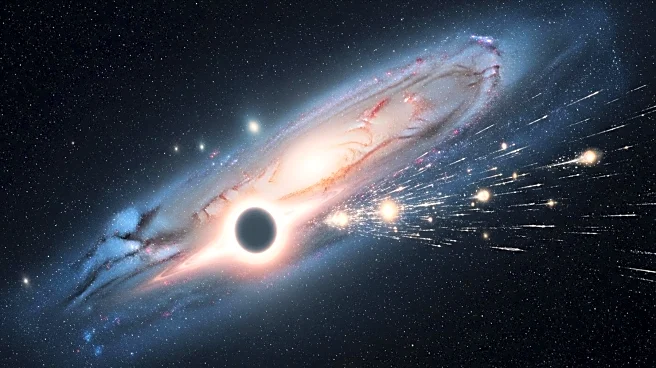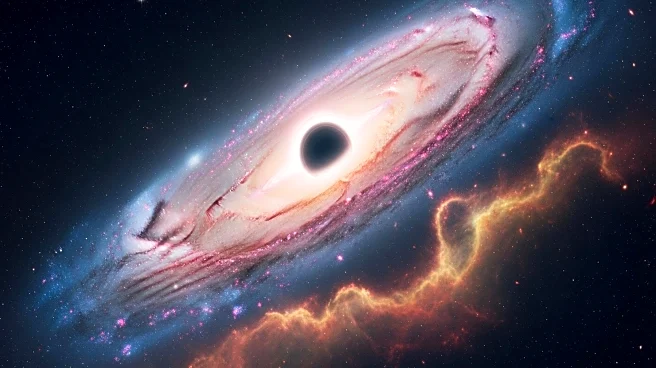What is the story about?
What's Happening?
Astronomers have identified a quasar named RACS J0320-35 that challenges existing theories of black hole growth. Located at a significant distance, this quasar has been traveling for 12.8 billion years to reach Earth. It has amassed a mass equivalent to a billion suns just 920 million years after the Big Bang, growing at a rate 2.4 times the Eddington limit, which traditionally caps black hole growth. This discovery was made using the Australian Square Kilometre Array Pathfinder and confirmed by telescopes in Chile. The quasar's rapid growth and brightness in X-rays have prompted scientists to reconsider current theories about black hole formation and growth.
Why It's Important?
The discovery of RACS J0320-35 has significant implications for our understanding of the early universe. It suggests that black holes could grow much faster than previously thought, potentially without the need for exotic conditions. This challenges the notion that early black holes could only reach massive sizes if they were born from giant gas clouds. The quasar's rapid growth might also be linked to the formation of powerful jets, which are rare among quasars. Understanding these phenomena could reshape theories about cosmic evolution and the conditions of the early universe.
What's Next?
Scientists are now tasked with determining whether the growth of RACS J0320-35 is a sustained process or a short-lived phase. The relationship between its rapid growth and the production of jets remains a key area of interest. Researchers aim to identify more quasars with similar characteristics using advanced telescopes and observatories. This ongoing research could lead to a reevaluation of theoretical models concerning black hole growth and the evolution of the universe.
Beyond the Headlines
The discovery of RACS J0320-35 highlights the complexities of cosmic evolution and the vast unknowns that remain in our understanding of the universe. It underscores the need for continued exploration and refinement of existing theories. As scientists delve deeper into these cosmic phenomena, they may unlock new chapters in our cosmic history, offering a more comprehensive picture of the universe's evolution.
AI Generated Content
Do you find this article useful?
